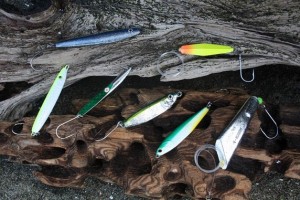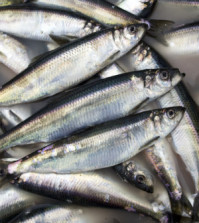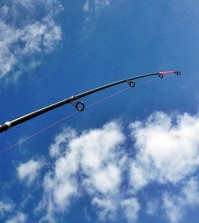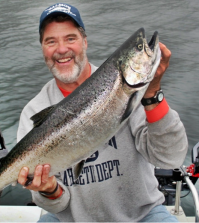How to Pick the Right Jig
The question I hear most whenever I give a talk on jigging for salmon is, “What’s your favorite jig?” I usually respond that my favorite is the jig I was using when I caught my last fish, and folks seem to respond to that answer in one of three ways. Some are disappointed that I don’t tell them exactly what that jig was; some think I’m avoiding the question; and some think I’m just a smart-ass. But it’s really as truthful an answer as I can give, because my “favorite” jig is the one that’s the right shape, weight and finish for the conditions at any particular time.
 Anyone who fishes for salmon long enough and often enough will occasionally find himself or herself in one of those wonderful situations where there are hungry—no, make that suicidal—fish swimming tight circles around the boat, and in those rare situations virtually any metal jig you tie to the end of your line will probably fool ‘em, provided you lift and drop the rod tip now and then to impart a little life into the lure. All metal jigs, from the elongated-diamond-shaped Buzz Bomb to the very lifelike and realistic Crippled Herring, are the approximate size and shape of the baitfish on which salmon feed, so all are potential fish-getters.
Anyone who fishes for salmon long enough and often enough will occasionally find himself or herself in one of those wonderful situations where there are hungry—no, make that suicidal—fish swimming tight circles around the boat, and in those rare situations virtually any metal jig you tie to the end of your line will probably fool ‘em, provided you lift and drop the rod tip now and then to impart a little life into the lure. All metal jigs, from the elongated-diamond-shaped Buzz Bomb to the very lifelike and realistic Crippled Herring, are the approximate size and shape of the baitfish on which salmon feed, so all are potential fish-getters.
But, because each of the many jigs on the market today is shaped and designed a little differently from all the others, and because most are available in a wide range of lengths, widths, weights and colors, some jigs in your tacklebox are much better suited than others to what you’re trying to accomplish on any given day, or any given hour, or maybe even minute-by-minute.
There are lots of variables to consider every day we go salmon fishing, but if we’re going to be jigging, there are a few basics that we always have to keep in mind. The number one most important thing a jigger has to do is keep the jig moving. This isn’t a spectator sport; if the jig isn’t rising and then free-falling through the water continuously, it won’t look like real food to any self-respecting salmon, so it’s up you to give it “life.”
Secondly, the more vertically (straight up and down) that jig moves, the better chance it has to flatten out and look like a real baitfish as it falls, and that’s what you want to accomplish every time to drop the rod tip on the jigging stroke. The greater your line angle into the water, the less effective your jig is going to be.
And, the third golden rule of jigging is one that applies to all fishing, and that is to get your lure in front of the fish and keep it there as long as possible.
Although not everyone may agree, I think there’s a fourth basic rule of jigging, and that is to fish as light a jig as you can get away with. A lighter jig has more “life” with less effort on your part and causes less wear and tear on your body (especially your jigging arm) than a heavier jig.
So, the best jig for any given situation (and some of you have heard this before) is the lightest jig that will fall straight down and maintain a vertical line angle at whatever depth you need to fish to stay in the strike zone. As a general rule, that means use a smaller, lighter jig when the salmon are closer to the surface, when there’s little wind or current or (maybe) when you’re fishing very light, small-diameter line. If, on the other hand, the fish are deep, you’re dealing with a lot of wind or current, you’re going to need a much heavier, faster-sinking jig to reach ‘em and stay on ‘em.
As I mentioned earlier, there are dozens of jigs on the market and hundreds of size, weight and color variations, so there are several options for each of the extreme situations mentioned above and all conditions in-between. Although I don’t have a “favorite” salmon jig, I do have a few recommendations for some of those many jigging situations you may encounter out there on the salmon grounds.
Let’s start at the top, as in near the surface.
The good ol’ Buzz Bomb is the jig that’s most commonly associated with near-surface jigging. This free-sliding, diamond-shaped lure can be fished vertically like most other metal jigs if you’re fishing fairly shallow water, but it’s best-suited to what some call horizontal jigging. It’s usually cast across the water, allowed to sink several feet, then retrieved in a series of lifts and drops. Because it’s long and flat, with fluked edges, it spins freely on the line as it falls through the water, so it drops more slowly than most other jigs. It’s perfectly suited to fishing the top 20 to 30 feet of the water column, which is why it works so well for Coho and pink salmon, as well as Chinook in shallow water. Because it’s usually cast rather than simply dropped straight down like other jigs, the Buzz Bomb can be fished from docks, jetties and the beach, not just from boats. As for colors, the hot hues show up well in shallow water, so I like the Fire Orange and Hot Pink Buzz Bombs for Coho and pink salmon. If there are Chinook around, I tend to go with Polar Bear (white), Green Pearl and Pink Pearl, as well as the newer holographic finishes.
While the Buzz Bomb has been around for nearly four decades, another good choice for shallow-water jigging has been on the market for less than four years, but it’s already gained a pretty good reputation, especially around the summer salmon grounds of the Strait of Juan de Fuca. The Kandlefish was developed by Crippled Herring creator Pete Rosko, and like its predecessor, it’s a very realistic imitation of a real, live baitfish. Kandlefish jigs are available in weights from 1/6-ounce to 6 ounces, and the 1/3- to 1–ouncers are perfectly suited to fishing depths down to maybe 40 or 50 feet with 10-pound mono or 15- to 25-pound braid. While such depths are generally considered the realm of Coho and pinks, it’s not at all unusual to find summer kings that close to the surface, both out on the ocean and along the rocky points and kelp beds of the Strait. The thin, blade-like bodies of those small Kandlefish literally dance as they’re twitched through the water, and they can be deadly on those days when the kings are suspended in the water column or feeding near shore. Kandlefish jigs come in some interesting colors, but my favorites for shallow-water and calm-water jigging are Silver/Green Back, Chrome, and a really natural-looking combination called Green Mac.
If you’re marking salmon at mid-depths—say, 40 to 80 feet—and/or there’s a light wind or tidal flow, it’s time to go to a beefier jig, something in the 1 ½- to 3- or 4-ounce range. Again, I like the Kandlefish in those sizes, especially in the Glow/Green Back and Pearl/Chartreuse Back finishes, but there are several other good choices.
Point Wilson’s Anchovy Dart is another very good jig for those mid-water/moderate water movement conditions. It’s fairly thick-bodied and heavy for its length, so it sinks quite quickly, and a 2-ouncer is usually enough to reach down 60 or 80 feet if you’re using braided line. If that size jig isn’t staying vertical, go to the 3-ouncer. This jig has caught a lot of south-sound kings for me during the summer months, and I’m partial to the Blue Nickel and Green Nickel finishes, in that order.
Dave Sanford’s Dungeness Stinger, which was marketed as the Deep Stinger when Luhr Jensen had it, is another good choice when you need a jig that will get to the middle depth ranges quickly and catch fish once it gets here. I try to get by with a 2-ouncer whenever possible, but you may have to upsize to 3 or 4 ounces if current or wind increase. The Stinger’s Nickel, Nickel Green and Pearl Green finishes all work very well for middle-depth salmon.
I’ve been a fan of Pete Rosko’s most famous fishing invention, the Crippled Herring jig, for about 25 years. It’s put hundreds of fish in the boat for me, from top-water Coho salmon to bottom-dwelling monster halibut, but I like it best for fishing Chinook in 50 to 90 feet of water. I prefer the 3-ounce size for this kind of fishing, but the 4-ouncer will work just as well. As I’ve mentioned lots of times before, the Crippled Herring is probably the most “real” looking of all metal jigs, whether or not that really matters to the fish. The Nickel/Neon Green Back finish is my old stand-by, followed closely by Pearl White, but the newer Hologram finishes, especially Brilliant Silver and Brilliant Silver/Neon Green, are also proven salmon-getters.
The Anchovy Dart, Dungeness Stinger and Crippled Herring all are available in larger sizes that will reach greater depths and get you down better in tougher conditions, but when I need to bounce bottom in 90 feet of water or more and the tide’s snorting along pretty good, my jig of choice is often the one created about 35 years ago by Port Angeles’ own Norm Metzler, the Mooch-A-Jig. It’s a very heavy jig for its length, so it sinks quickly, but its beveled head and bent, tapered body, along with its free-sliding design, make it one of the most active jigs on the market, and it has a wicked effect on deep-water Chinook, whether they be summertime kings or winter blackmouth. A 4-ounce Mooch-A-Jig will do the job when conditions are good, but I use a lot more 6-ouncers, and sometimes even go to 8-ounces when conditions are tough. Painted versions of this jig were available for a while, but I prefer the standard chrome finish and sometimes add a strip of prism tape to the smooth (inner) side of the lure for added flash and color. Mooch-A-jigs, by the way, are now manufactured by Evans Manufacturing of Arlington, Washington, which I hope will make them more readily available on store shelves than they have been in recent years.
Another jig worth mentioning for deep-water Chinook or getting down in less-than-perfect jigging conditions is the Grim Reefer jig. Unlike most other metal jigs, the Grim reefer is built heavier in the rear end, so it tends to stay in the vertical position as it falls through the water, so it sinks very fast. Because it doesn’t go horizontal as it falls, it’s not as likely as most jigs to take salmon on the free-fall, and you have to put more effort into your jigging stroke to keep it working once you achieve fishing depth, but it does catch fish, and it will certainly get you down into the strike zone faster than all the others. I like a white jig for deep-water fishing, so the Pearl White Grim Reefer is my first choice.










